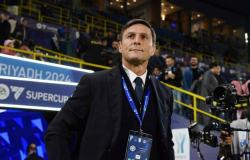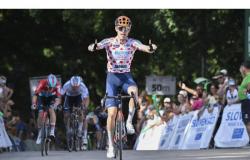Siena, 11 June 2024 – Palazzo delle Papesse is reborn thanks to Opera Laboratori. Beppe Costa, President and CEO of the company, signed the purchase contract for the historic residence of Caterina and Laudomia, sisters of Pope Pius II. The leading company in Italy in museum management has purchased the prestigious property through a group company and will work to reposition the building, among the most iconic in the city of Siena, at the center of Italian cultural institutions. In fact, the reopening project of the Palace is already ready, which will see the inauguration of the exhibition – in collaboration with Galleria Continua – of Julio Le Parc, Argentine sculptor and painter, a leading figure of kinetic art and of Op Art, as well as being a firm defender of human rights. Julio Le Parc’s works are exhibited in major museums and galleries around the world and his influence on contemporary art is recognized internationally. Opera Laboratori, through its management, wants to trace a path of cultural rebirth that will bring international art exhibitions and events to the heart of Siena in a building that has been a point of reference for many years. In 2025, on the occasion of the twentieth anniversary of the first Sienese exhibition and thirty years after the death of Hugo Pratt, a large exhibition dedicated to the cartoonist and writer “father” of Corto Maltese will be organized. The exhibition, curated by Patrizia Zanotti and Patrick Amsellem, with the project by architect Giovanni Mezzedimi, will be produced by Opera Laboratori and will be the first stop on a journey through important Italian museums. “The intuition – comments Beppe Costa – shared with Daniele Petrucci, former managing director, and with Stefano Di Bello, chief operating officer of Opera Laboratori, not only represents a big step for our company, but is an investment made for the world of culture. Palazzo delle Papesse will dialogue with all Italian and international cultural institutions and will invite its guests to have a glimpse of the Future”. The willingness to collaborate was immediately picked up by the mayor of Siena, Prof. Nicoletta Fabio, who in a note declared: “A great opportunity for the city, I am happy that this news arrives on the same day in which we presented the cultural programming of the Santa Maria della Scala. A new vital, dynamic and constructive lifeblood is forming in this city, thanks to the synergy between all the actors involved. With Opera Laboratori we immediately established an excellent relationship of collaboration and mutual respect and I believe that the path traced is the right one”. Palazzo delle Papesse is unveiling its new visual identity today, designed by Lorenzo De Rita, long-time creative director (he has curated communication campaigns for international clients such as Nike, Adidas and Volvo) and his design team at The Phosphorescent Room , a Center for Studies on Imagination. There are three words chosen that represent the identity of the Palace: vision, openness and plurality. Obviously the spokesperson for this word is the most illustrious guest who has ever crossed the threshold of the Palace door: Galileo Galilei. Palazzo delle Papesse, through its exhibitions, will offer new “visions” and ways of seeing art and culture, to be looked at with new eyes: “eyes that want to see and that believe what they see…” (Galileo Galilei). The word “openness” describes the soul of the Palace: there is still the open-mindedness of Galileo and his way of interpreting science, but there is also that of Pius II’s sister, Caterina Piccolomini. A woman who “despite everything”, going against the norms and customs of her time, built and organized the building which will soon be returned to the public. Just as Caterina was an open-minded woman, so the Palazzo delle Papesse will have to become a symbol of open-mindedness, inclusive and participatory, where artists will be able to “go beyond and imagine cities that do not exist on geographical maps, where no human being is a stranger” (Pope Francis, speech to artists on the occasion of the Venice Biennale). “Plurality” is perhaps the most representative of the three key words chosen. Because plurality is in the name of the Palace, in the number of crescent moons of the Piccolomini symbol, in the number of inhabitants and the functions that have followed one another over time, but also in the ability to dialogue with the different institutions of the city and the territory.
Historical notes of the building. The Piccolomini palace is called “delle Papesse” because it was commissioned by the sisters of Pius II. Elected pope, Enea Silvio Piccolomini, in his six years of pontificate, stopped in Siena at least three times, and two stays, between 1459 and 1460, were particularly long. During these visits, Pius II began the design of some residences that were representative for the family, such as the two powerful palaces in Via di Città and Banchi di Sotto, as well as a Loggia and a funerary chapel, symbols of the ambitious dynastic politics of Aeneas Silvio. The first news of architectural commissions concerns, in 1459, the residence of his sister Caterina, widow of Bartolomeo Guglielmi, who, with the election of her brother to the papal throne, had the opportunity to reacquire her surname of origin. The “patronymic” of the palace known as “delle Papesse” bears witness to the family ancestry, partly inspired by the Medici palace in via Larga in Florence, with the ashlar and large round portals on the ground floor, while the mullioned windows with the arches acute sixth still remain partly linked to the Sienese Gothic style. The attribution of the drawing, traditionally assigned to Bernardo Rossellino, the Piccolomini architect in Pienza, is problematic and not entirely resolved. In the documents relating to the construction of the building, which lasted for about three decades, Antonio Federighi is mentioned, one of the most representative sculptors and architects of the Sienese Renaissance, who, at least, must have been a superintendent of the works. A descendant of the Piccolomini family, Archbishop Ascanio, hosted Galileo Galilei at the Palazzo delle Papesse, after his condemnation by the Holy Office in 1633. During his stay in Siena, the scientist dedicated himself to the composition of the Discourses and mathematical demonstrations around two new sciences published in Holland in 1638 to escape the censorship of the Inquisition. It is a text in which he perfected his studies on the principles of mechanics useful later to Newton to formulate his law of universal gravitation. The mathematician Teofilo Gallaccini recalls in his writings the six observations of Galileo’s Moon carried out from the loggia of the Palace in the month of August. Using the telescope, the great scientist discovered that this satellite was not perfect or spherical as was believed, but dotted on the surface with mountains and craters.





